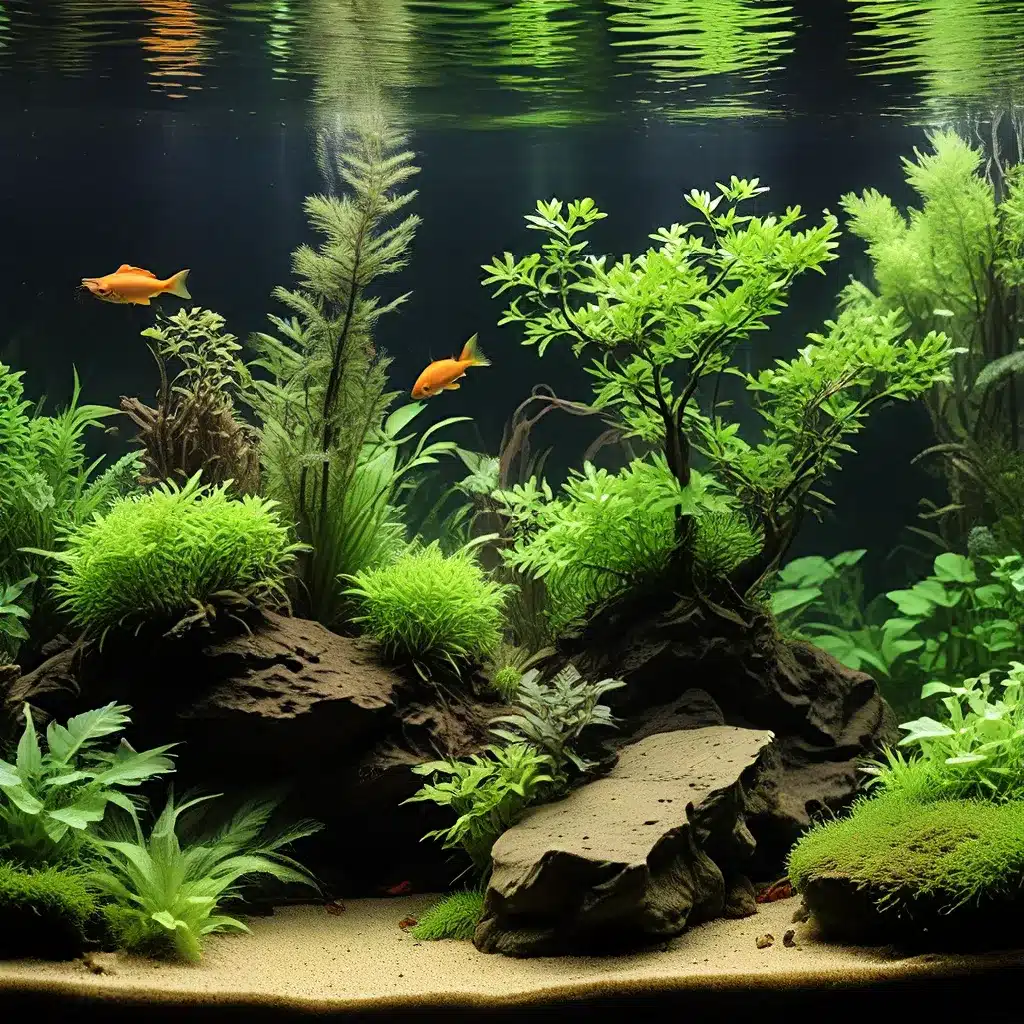
Exploring the Evolving Concept of Community Aquariums
The idea of a “community aquarium” has undergone a remarkable transformation in recent years. Gone are the days when a community tank was simply a collection of colorful fish from around the world, haphazardly thrown together. As our understanding of fish behavior and ecology has deepened, the modern concept of a community tank has become more nuanced and intentional.
One key driver of this shift has been the rising popularity of niche aquarium setups, often referred to as “biotope aquascaping.” The term “biotope” refers to a specific natural habitat or ecosystem that is recreated within the aquarium, with the goal of providing a natural and suitable environment for a particular set of fish species. This approach to aquarium design and fish selection has unlocked a new level of fascination and success for aquarists.
As one expert aquarist noted, the concept of a community tank has evolved from “a collection of different kinds of cool fishes I like from all over the world living in one tank” to a more curated and specialized approach. Aquarists are now increasingly focused on replicating the unique environmental niches and parameters that specific fish species have adapted to in their native habitats.
Uncovering the Secrets of Aquarium Niches
The allure of biotope aquascaping lies in the opportunity to create miniature ecosystems within our aquariums, where fish can thrive and display natural behaviors. By studying the specific habitats and niches that different fish species occupy in the wild, we can design our aquariums to cater to their unique requirements.
One insightful observation highlights the fact that in a single forest stream in the Rio Negro region of Brazil, researchers have documented up to 20 different fish species living in close proximity, each occupying its own distinct niche. The population density in these natural habitats can be astoundingly high, with as many as 100 individuals per cubic meter.
The takeaway from this is not to simply pack our aquariums to the brim, but rather to recognize the incredible diversity and adaptability of fish species when provided with the appropriate environmental cues and niches. By understanding and replicating these natural niches within our aquarium setups, we can unlock a whole new realm of successful fish keeping and fascinating behaviors.
Designing Aquarium Biotopes: Considerations and Techniques
Crafting a successful biotope aquarium requires a deep understanding of the specific fish species you aim to keep, as well as the unique characteristics of their native habitats. This includes factors such as water parameters, substrate composition, vegetation, and the presence of natural materials like leaves, branches, and rocks.
One of the most exciting developments in the hobby has been the increased availability and understanding of various botanical materials that can be used to create these natural niches. Hobbyists are now seeking out specific leaves, seeds, and other plant-based items from the regions where their target fish species are found, with the goal of replicating the exact conditions the fish would encounter in the wild.
For example, Apistogramma and Nannochromis cichlids have been observed spawning in specialty botanical items like Jungle Pods and Savu Pods, which mimic the dense, leaf-filled environments they naturally inhabit. Plecostomus and other catfish species have also been seen thriving and interacting with a variety of botanical materials, just as they would in their natural habitats.
Beyond the use of botanicals, biotope aquascaping may also involve carefully curating the substrate, water flow, and lighting to match the specific requirements of the target fish species. Loaches, for instance, may benefit from a varied, multi-layered substrate to accommodate their natural burrowing behaviors, while Darter Characins may thrive in a setup with deep leaf litter beds.
Unlocking the Potential of Biotope Aquascaping
The pursuit of biotope aquascaping has opened up a world of possibilities for aquarists, allowing them to create vibrant and naturalistic aquarium environments that cater to the specific needs of their fish. By studying the unique habitats and niches of different fish species, we can not only improve the health and welfare of our aquatic pets but also unlock new insights and behaviors that were previously elusive.
Some of the potential benefits and discoveries that may arise from this approach to aquarium keeping include:
-
Successful breeding and spawning of previously temperamental fish species: By replicating the exact environmental conditions that trigger natural spawning behaviors, aquarists may be able to facilitate the breeding of fish that were previously challenging to breed in captivity.
-
Improved overall fish health and longevity: By providing fish with an environment that closely matches their natural habitat, we can reduce stress, improve immune function, and support the long-term well-being of our aquatic companions.
-
Observation of natural behaviors and interactions: Biotope aquascaping allows us to witness the intricate social dynamics, feeding behaviors, and other natural behaviors of fish species as they would occur in the wild, offering a window into the fascinating world of aquatic ecosystems.
-
Reduced reliance on wild-caught specimens: As our understanding of biotope aquascaping and captive breeding techniques advances, we may be able to reduce the demand for wild-caught fish, contributing to the conservation and preservation of fragile aquatic ecosystems.
Embracing the Evolving Aquarium Hobby
The aquarium hobby is in a state of exciting transformation, as hobbyists and enthusiasts increasingly embrace the concept of biotope aquascaping. By studying the unique habitats and niches of our favorite fish species, we can create aquarium environments that not only captivate our senses but also provide our aquatic companions with the best possible conditions to thrive.
Whether you’re a seasoned aquarist or a newcomer to the hobby, the world of biotope aquascaping offers a fascinating and rewarding journey of discovery. Stay curious, stay creative, and continue to push the boundaries of what’s possible in the aquarium world.

